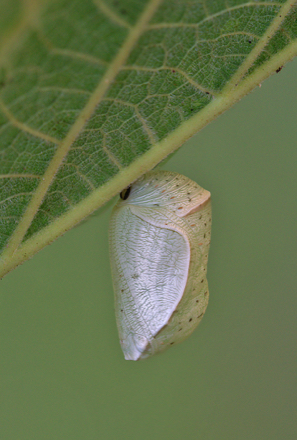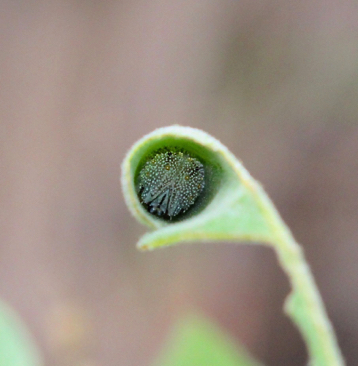|
|
Post by Paul K on Jan 23, 2021 17:53:45 GMT -8
Thank you Yorky for sharing that picture of your wonderful pair ! That is indeed one of the best species and one I've always desired... The male is REALLY something. I see it offered here and there however, never as cheap as 50 bucks on a pair. Don't mean to be a "doubting thomas" nomihoudai but, perhaps you mean't $50 on the (female) alone. Maybe Thorne up in Canada has it. I'll have to check. Probably, should endeavor to visit him this year and buy a pair direct ! Heck, maybe a few other things along with the pair. Trehopr1 Would that happen you will be in London this year I would be happy to meet with you and maybe do some hunting together shall time permit. Cheers Paul |
|
|
|
|
|
Post by trehopr1 on Jan 23, 2021 18:04:26 GMT -8
Wow, that would be great Paul !
If it is possible this year I'll be sure to let you know.
Best Regards,
Fred
|
|
|
|
Post by livingplanet3 on Jan 23, 2021 19:32:50 GMT -8
Great to see the discussion / photos of Anaeini - one of my favorite groups of butterflies. The pattern on the female A. excellens is superb, and that of the female M. zenica is remarkably similar to that of some species of Kallima. This spring / summer, I really should try to locate the foodplant (probably Croton capitatus) that my local Anaea andria feed on, and hopefully rear some caterpillars. If anyone has any advice on how to go about doing that, please let me know. |
|
|
|
Post by trehopr1 on Jan 23, 2021 20:55:16 GMT -8
Where do you live livingplanet3 to encounter A. andria ?
I live in Illinois but, have never seen or encountered it although,
technically it is only regarded as a species to be only “locally encountered”.
Apparently, my state is only populated each year either by the surviving
overwintering generation of the southern Great Plains and Mississippi River
Basin OR by migrants (strays) from other states..
Indeed beautiful but, tough to find generally...
|
|
|
|
Post by 58chevy on Jan 24, 2021 7:11:29 GMT -8
Even if you do find one, good luck catching it. They are very fast and won't let you get near them. Unless you are very stealthy and quick with a net, you'd have better luck using a bait trap.
|
|
|
|
Post by livingplanet3 on Jan 24, 2021 8:50:05 GMT -8
Where do you live livingplanet3 to encounter A. andria ? I live in Illinois but, have never seen or encountered it although, technically it is only regarded as a species to be only “locally encountered”. Apparently, my state is only populated each year either by the surviving overwintering generation of the southern Great Plains and Mississippi River Basin OR by migrants (strays) from other states.. Indeed beautiful but, tough to find generally... Texas. Specifically, I'm in the Cross Timbers ecoregion in the north of the state. True, although A. andria has quite a wide distribution, populations do seem to be rather spotty in occurrence. |
|
|
|
|
|
Post by livingplanet3 on Mar 7, 2021 11:43:07 GMT -8
I saw an Anaea andria two days ago - the first one I've seen this year. Hoping to collect a few specimens of the winter form, before they are replaced by the summer form.
|
|
leptraps
Banned
Enter your message here...
Posts: 2,397
|
Post by leptraps on Mar 10, 2021 11:46:44 GMT -8
Anaea troglodyta; I collected these numerous times in Bait Traps in South Florida (IFAS and Redlands area.) Big Pine Key and Navy Well's SW of Homestead. The larvae feed on Croton linearis. I reared them several times from the slash pine areas in southern Dade County and from Big Pine Key.
Croton linearis is also the host plant for Strymon acis bartrami.
Hesperia meskei pinocayo, also another scarce species that is also only found in the Slash Pine.
|
|
|
|
Post by livingplanet3 on Mar 10, 2021 12:09:06 GMT -8
It seems that all 3 of the US Anaea species (andria, aidea & troglodyta) might now be considered to be subspecies of A. troglodyta? At least, according to some authors.
|
|
|
|
Post by livingplanet3 on Mar 25, 2021 9:21:49 GMT -8
I collected a female A. andria yesterday afternoon. Its colors aren't quite as bright as those of the example in this photo, probably because it's from last year's brood. This season, will see if I can find some caterpillars from which to rear some perfect specimens. Adults (especially the males) are extremely hard to catch anyway, and will fly high into the trees at the slightest approach (not surprising, since they're closely related to Charaxes). I consider andria to be just as beautiful as many of the tropical members of its genus. |
|
|
|
Post by jshuey on Mar 25, 2021 9:31:06 GMT -8
Where do you live livingplanet3 to encounter A. andria ? I live in Illinois but, have never seen or encountered it although, technically it is only regarded as a species to be only “locally encountered”. Apparently, my state is only populated each year either by the surviving overwintering generation of the southern Great Plains and Mississippi River Basin OR by migrants (strays) from other states.. Indeed beautiful but, tough to find generally... Here's the deal in southern Indiana - and I bet southern Illinois as well. It can be found in early spring near stands of native croton - which is common in Indiana around many of our glades. You typically see it only in the spring - I assume because, ..., I actually have no idea. I would speculate that the bluff prairies overlooking the Mississippi in Shawnee National Forest would have the same type habitat. I will head south next week and take a look. I'll report back, j |
|
leptraps
Banned
Enter your message here...
Posts: 2,397
|
Post by leptraps on Mar 25, 2021 13:57:26 GMT -8
Anaea troglodyta floridalis (Anaea andria) as mentioned in several previous post I found Anaea species in Florida. I also found Anaea in Central Mississippi. I collected them in Bait Traps. I also Baited Trees, especially trees with loose bark. I seldom collected Anaea on the canopy of the forest.
In Florida I collected Anaea troglodyta floridalis in the canopy as well as ground level. As odd as this may sound, I collected more with Apples for bait than bananas. I also collected Purple Wings: Eunica tatila tatilista and Eunica monima
|
|
|
|
Post by livingplanet3 on Mar 26, 2021 9:56:08 GMT -8
Here's the deal in southern Indiana - and I bet southern Illinois as well. It can be found in early spring near stands of native croton - which is common in Indiana around many of our glades. You typically see it only in the spring - I assume because, ..., I actually have no idea. I would speculate that the bluff prairies overlooking the Mississippi in Shawnee National Forest would have the same type habitat. I will head south next week and take a look. I'll report back, j I think the host plant in my local area is probably Croton capitatus (Woolly croton) - might still be too early in the season for it to have any leaves, though. I've probably seen the plant many times before, and not realized what it was. |
|
|
|
Post by livingplanet3 on May 28, 2021 6:08:43 GMT -8
I found an Anaea andria caterpillar yesterday - the first one I've ever seen (probably because until this year, I didn't know how to look for them, or even recognize the host plant). Here's a photo of a mature caterpillar (mine is still much too small to get a good photo of) -  And, a chrysalis -  ![]() Anaea is the only genus in the nymphalid subfamily Charaxinae found in the US (unless you count the occasional vagrant Hypna clytemnestra in far southern FL). I'll try rearing the caterpillar and see how things go. At the moment, it's only about half an inch (13 mm) long. Fortunately, my backyard is full of the host plant (wild croton). Will see if I can find any more caterpillars; they aren't normally visible on the plants since they hide in leaves that they've rolled up and secured with silk -  |
|
|
|
Post by exoticimports on May 28, 2021 11:31:38 GMT -8
That’s a great photo.
|
|